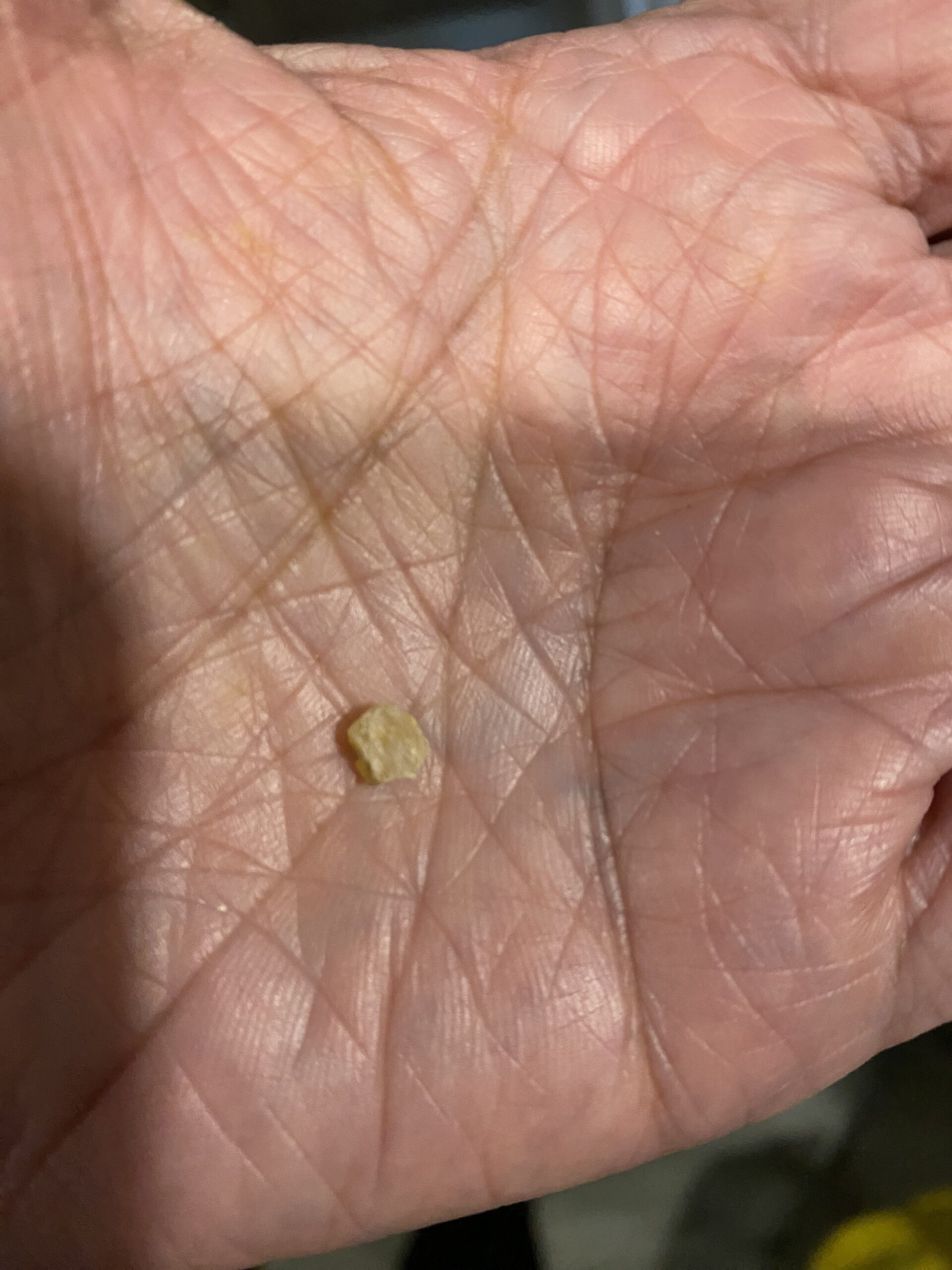It was in the bottom of our first bucket of dirt and gravel: a clear yellow-tinted stone, about the size of an orange seed. Had we found a diamond?
“Is this one?” Mrs. 123 asked me.
“It may very well be,” I replied. “Why don’t you go find out?”

She carefully placed the clear stone in a ziplock bag along with a few other small stones that stood out to us and headed back toward the building where staff at the park would examine our finds. I went back out to the field to fill another bucket with dirt and gravel, and waited for her to return.
We had left Hot Springs National Park that morning, and after a short drive set up at the campground at Crater of Diamonds State Park, just outside of Murfreesboro, Arkansas.
The park is one of the few places in the world where the public can search for real diamonds. The 37-acre field has been yielding diamonds since 1906, but tests suggested that mining operations wouldn’t be practical. The site was operated as a tourist attraction by private owners until the state purchased the field in 1972 and created a state park. Since that time, more than 35,000 diamonds have been found by park visitors.
The park charges an entrance fee of $15 per person. You can bring your own digging equipment or rent a package that includes a shovel, a bucket and two screens for sifting the dirt and gravel. The field is plowed every day, overturning fresh dirt and stones.

The process is pretty straightforward, but somewhat grueling. You collect gravel in your bucket— trying to collect as little dirt and mud as possible — then wash it in large basins provided by the park. The first screen filters out the large rocks, the second screen lets the mud and dirt wash away. Then you examine what’s left.
The park attracts some regulars, whom you can quickly identify because they bring their own equipment and most often a wagon to carry it in. Visitors can also take a bucket of gravel to sort through at home.
The visitor center has a running display listing the diamond finds from the past week, how big the stones were, and where the lucky visitors who found them were from. March 5th seemed to be a big day for finds, but there was a diamond found every day of the week. Visitors find on average two diamonds per day, as well as other precious gem stones. You can keep whatever you find.

I was sorting through our second bucket when Mrs. 123 returned. Had we found a diamond? Would it pay for our yearlong RV trip? Would it at least cover our admission and equipment rental costs?
There was little bounce in her step as she approached the water basin.
“Well?” I asked.
“No. It’s quartz,” she replied.
We filtered through the second bucket, then decided to call it quits. The field was very muddy as it had rained a lot the previous days. By the time we were done, my jeans and shirt were covered in mud, my shoes weighed three times their normal weight. The park provides some high powered, cold water hoses to wash the rental equipment and to clean yourself off. Some parents used them to hose down their kids after a day of playing in the mud.
We hadn’t found any diamonds but it was a fun experience nonetheless. It’s a little bit like playing the lottery: you pay for a chance to dream about what you would do if you won, or in this case, if we found a large diamond.
Maybe we’d go on a year long RV adventure?
Days: 60
Miles Traveled: 8,281
Next stop: Dallas, Texas


